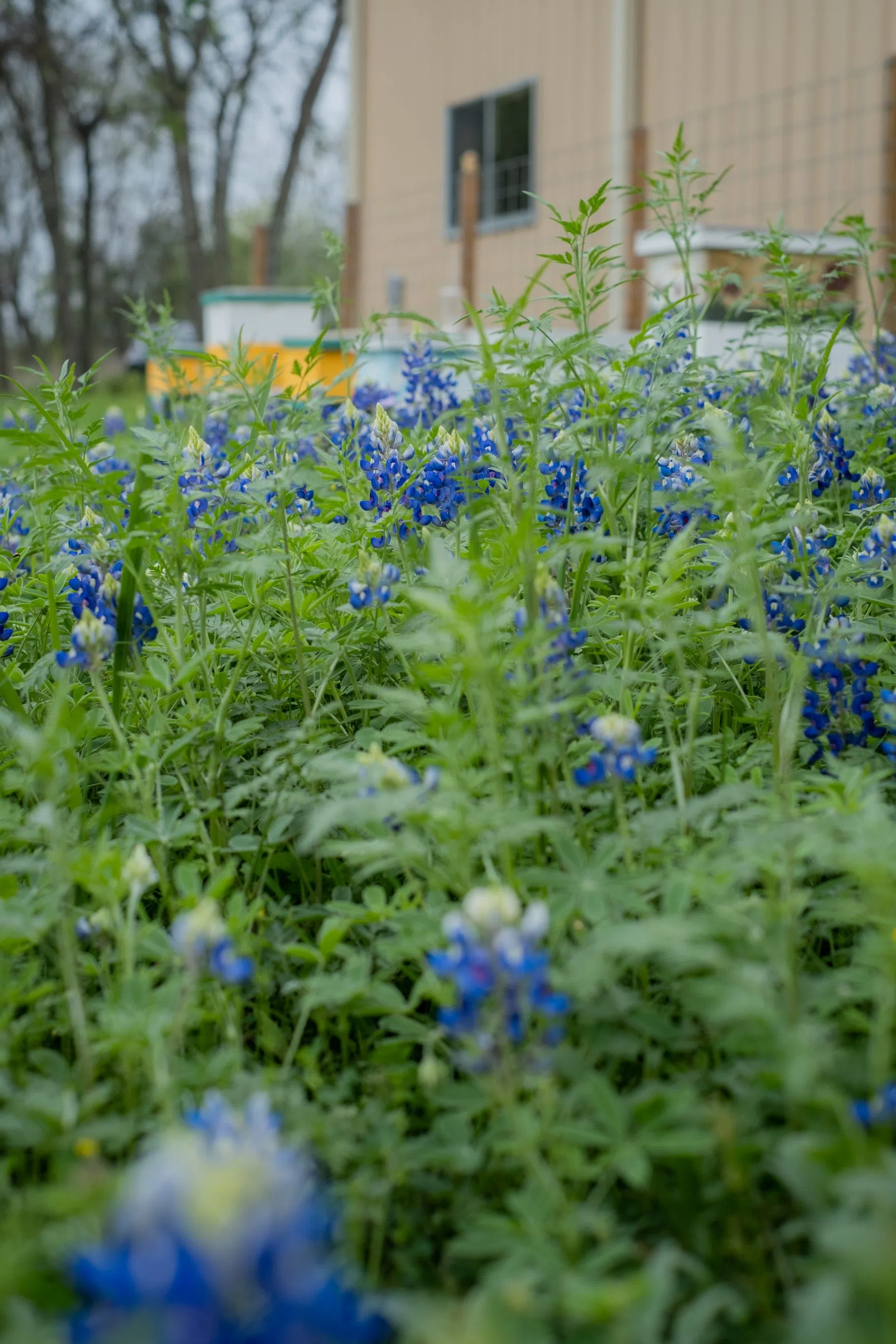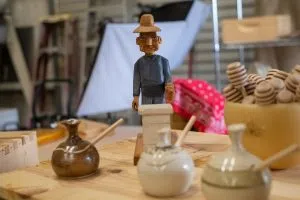This time of year, fields and yards are painted with spring colors as wildflowers bloom across Texas. Indian paintbrushes and blankets intertwine with lantana and thistles, creating a backdrop unique to the Lone Star State. But of all these flowers, the most popular is, without a doubt, the Texas bluebonnet.
The iconic bloom lures locals into pastures to pose for portraits immersed in the icon shade of blue. More important than the bluebonnet’s role as a photo backdrop, however, is its role as a food source for bees and other pollinators.
Thién Gretchen owns the Gretchen Bee Ranch in Seguin with her husband, Mark. Together, they work to cultivate their hives with native flowers as part of their business, producing beeswax products.
“They’ll work the bluebonnets,” Thién said. “Some plants will yield both nectar and pollen. We seeded with clover because they can get great nectar and pollen from them. We’ve got the burr clover that nobody likes –– I don’t really like it either, but I let it go in some areas because I see the bees working it. This time of year, it’s critical they have as much as they possibly can because here, everything dies in summer. And then they’re desperate. At that point, beekeepers usually supplement their diet to get them through hard times. So when we have the summer dearth –– that period where it’s just scorching hot, there’s no rain like last year –– you have to feed them, or they won’t make it. We try to connect that in people’s minds when they come in. They’ll ask where the mesquite or wildflower honey is, but they can’t make either if things are not blooming.”
For the Gretchen bees to produce more wax and honey, more food is needed to be available near their colonies. So Thién and Mark devised a plan they could implement in their backyard.
“One of our projects last year was casting tons of native wildflower seeds all over our property,” she said. “That was something that seemed like a quick, easy thing to do. So, the last couple of years has been all about what we can do here at this property where we don’t have an HOA.”
Many local and state municipalities have begun incorporating pollinator sections into parks where flowers and weeds can grow, allowing patches of wild foliage to take over in an otherwise manicured area. Homeowners wishing to do the same, however, often face other obstacles.
“I know it’s hard with the HOAs and city codes –– it’s a constant battle,” Thién said. “And even land development is a constant battle. Part of the reason we reduced our hives was because most of our bees were in the surrounding area, and we’ve got so much development going on on land that used to be great bee pastures with wildflowers. But all the land is being developed, so without the food source, we couldn’t sustain 400 hives around here. So then, we’d have to truck them around to different areas because you can only put so many colonies in an area. They were just so all-consuming. Morning to night, you’re in the field this time of year just tending to them. So now, there’s a lot more time for us to explore the craftier part of beekeeping, which is the beeswax, the candles, but also body care and other things. Now we get to do more things we enjoy and wanted to explore.”
Transitioning from beekeeping to beeswax crafting came about, in part, due to the amount of leftover wax the Gretchens would have following a honey harvest. After some experimentation with the material, Thién found she preferred it over many commercially available products.
“The beeswax is such a clean product,” she said. “It burns longer, it burns cleaner as a candle, but in body care –– if people look up the benefits of beeswax –– it’s just healthier. There’s not a lot in there that’s bad unless you get the wax from a bad source. And it just lasts longer. We love the control of knowing there are three or four basic ingredients that are good for you –– that are natural, that the bees made. It allows us to not waste anything that they made. So when we extracted honey from those 400 hives, you had some leftover beeswax, so it’s nice to use all that up. And then soon we started using way more than we produce –– even with 400 hives, so Mark started sourcing beeswax from other beekeepers in South Texas and then all over Texas. That helps us do all the things we want to do.”
Thus, the Beeswax Department at the Gretchen Bee Ranch came about. Inside their showroom, honey-golden candles sit neatly arranged in baskets while wax lanterns dressed in pressed flowers and cicadas add a gentle glow to the room. On the wall, wax ornaments poured from vintage cookie molds from Pennsylvania hang on red ribbons.
Around the space, Mark’s collection of glass insulator-caps accent candle displays and shelves. They are the inspiration behind one of the Beeswax Department’s most original candle designs.
“Another thing we learned to make was candle molds with silicone,” Thién said. “Nobody, as far as we know, is making insulator candles. So Mark likes to do things other people aren’t doing. He’s been collecting insulators since he was little because someone told him and his brother they’d be worth a lot of money. So as six and seven-year-olds, they just knew they were going to be rich. But now they’re so neat, and we’ve been able to get them out, and there’s just so much history behind each one. These are all things that are fun for us to do that fit in the shop that we never got to do before. Eventually, we’ll add things like flower-pressing classes. So part of cultivating the land with all these wildflowers is for the bees and the beauty, but it’s also for things like our crafts and teaching people.”
With patches of bluebonnets bursting around her hive boxes, Thién will soon be able to don her beekeeper suit and open them up. She’ll feed them, check their honey and wax production, and probably even install a new queen in the hive. But despite all the work yet to be done this spring, Thién doesn’t mind because when she’s cultivating her bees, she’s also cultivating her creativity.
- Photo by Lizz Daniels
- Photo by Lizz Daniels
- Photo by Lizz Daniels
- Photo by Lizz Daniels
- Photo by Lizz Daniels
- Photo by Lizz Daniels
- Photo by Lizz Daniels
- Photo by Lizz Daniels
- Photo by Lizz Daniels
- Photo by Lizz Daniels
- Photo by Lizz Daniels
- Photo by Lizz Daniels
- Photo by Lizz Daniels
- Photo by Lizz Daniels
- Photo by Lizz Daniels




















